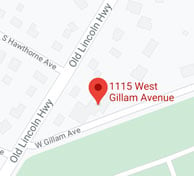One essential aspect of boiler performance is its turndown ratio, a key metric that directly impacts efficiency and operational flexibility. If you are an HVAC novice, you may wonder what turndown ratio is...In this blog, we will help you understand the concept of turndown ratio, its significance, and how it influences the overall efficiency of boilers.
What is Boiler Turndown Ratio?
Turndown ratio measures a boiler's ability to modulate its output to match the current demand for heat. Simply put, turndown ratio refers to the ratio between a boiler’s highest fire setting (maximum output) and lowest fire setting (minimum output). For example, a boiler with a turndown ratio of 5:1 means it can operate at 20% of its maximum capacity (1/5) when the demand for heat is low.
Heat demand refers to the amount of heat needed to maintain a desired temperature in a given space or for a particular process. It's an important parameter in the context of heating systems such as boilers and furnaces.
Importance of Turndown Ratio
Energy efficiency
A high turndown ratio is indicative of a boiler's efficiency at various load levels. Efficient modulation ensures that the boiler can match the actual heat demand, preventing unnecessary cycling on and off, which can lead to energy wastage.

Cost savings
Boilers with a higher turndown ratio can operate at lower loads without sacrificing efficiency. This flexibility allows for significant cost savings by avoiding the need for constant start-ups and shutdowns, reducing wear and tear on components, and prolonging the system's lifespan.
Environmental impact
Optimal turndown ratios contribute to a reduction in greenhouse gas emissions. By operating at lower loads during periods of lower demand, boilers can maintain combustion efficiency and minimize the environmental impact associated with excessive fuel consumption.
Process control
Turndown ratio is essential for maintaining precise control over the heating process. It ensures that the boiler responds quickly and accurately to changes in heat demand, providing a stable and comfortable environment in applications like space heating or industrial processes.
Factors Influencing Turndown Ratio
Burner design
The design of the burner is crucial in determining the turndown ratio. Advanced burner technologies, such as modulating burners, allow for more precise control over the combustion process and contribute to higher turndown ratios.
Boiler size and type
Larger boilers often have higher turndown ratios compared to smaller ones. Additionally, the type of boiler – whether it's a condensing boiler or a traditional one – can impact its modulation capabilities.
System design and sizing
Proper system design, including the sizing of components such as pumps and pipes, is essential for achieving optimal turndown performance. A well-designed system ensures that the boiler can modulate effectively to meet the varying load requirements.
Conclusion
In the world of boilers, understanding turndown ratio is key to unlocking enhanced efficiency, cost savings, and environmental benefits. It's a critical parameter that should be carefully considered during the selection and design of boiler systems to ensure they meet the specific demands of their intended applications. 

If you live in the Delaware Valley/Greater Philadelphia area and would like to find comfort within your home, visit our website or give us a call at 215 - 245 - 3200 to learn more.



